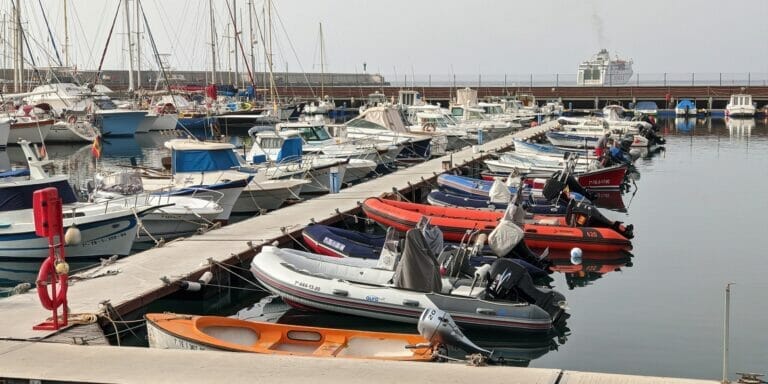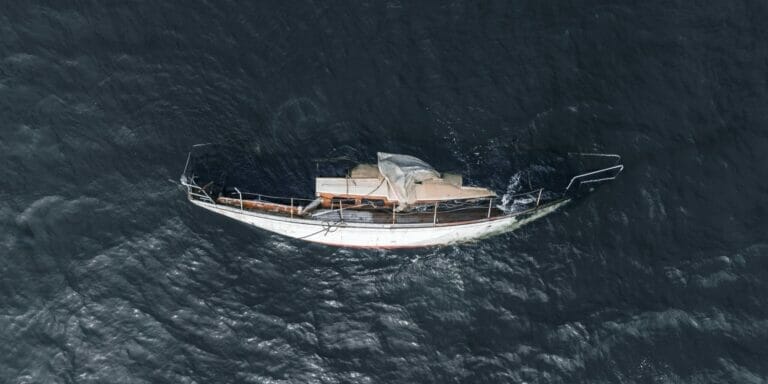Although the idea may hurt, every boat eventually reaches the end of its lifecycle and must be disposed of accordingly. In contrast to many other things, which we can nowadays easily get rid of and usually even recycle the majority of, this is far more difficult with boats and therefore more expensive. Consequently, many end-of-life boats are unfortunately not disposed of properly, but simply abandoned somewhere, in the worst case in the middle of nature. That this has dire consequences for our environment should be obvious. But what are the main causes for this problem of improper disposal of end-of-life boats? And more importantly, what can we do about it? In the following, we will take a closer look at these questions and give you a comprehensive overview of the problem and potential solutions.
The Issue
Unfortunately, a significant proportion of end-of-life boats – in the EU, for example, the figure is estimated at 12.5 percent – do not end up at appropriate disposal sites where they could be properly processed. Rather, at the end of their lifecycle, these boats are then dumped on landfills or other vacant sites, abandoned in the water or, in the worst case, even deliberately sunk. Such improper disposal of end-of-life boats not only poses enormous risks to the environment, but also has negative economic as well as social impacts. First, let’s look at the consequences for the environment.
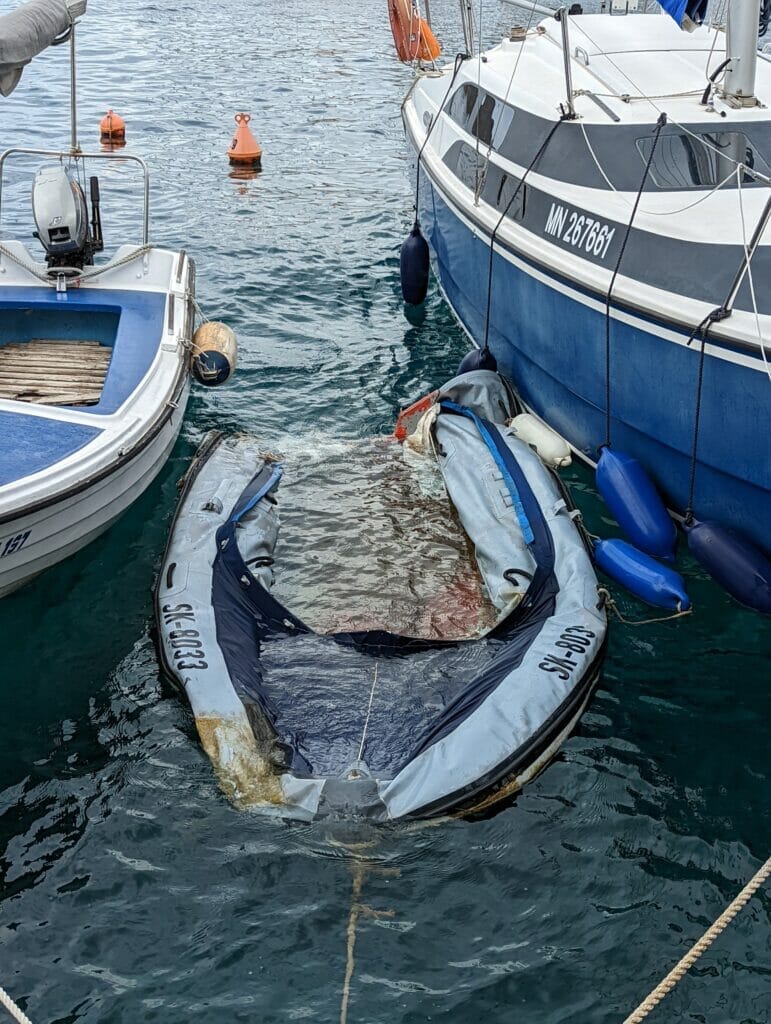
Environmental Impacts
A boat is made of a variety of different materials, many of which are very harmful to the environment. From toxic operating fluids such as fuel or engine oil, to plastics that degrade over time or toxic antifouling paint, no matter where you look, an abandoned boat poses a myriad of dangers to the environment.
Economic Impacts
In addition, improperly disposed of end-of-life boats also have an economic impact, as abandoned boats incur high costs in salvage, transportation, and subsequent proper disposal. If boats are simply left behind in marinas, they block valuable berths, which frustrates both the marina operator and boaters looking for a berth. Furthermore, all economic actors involved in the circular economy are to some extent missing out on potential profits that would be realized through correct disposal, and the tourism industry can also suffer economic damage due to environmental degradation.
Social Impacts
Social consequences include that the damage to the environment caused by improper disposal of end-of-life boats also affects everyone’s quality of life and is an acute hazard, especially for swimmers, divers, and other boaters. In addition, improper disposal deprives the industry of potential work and thus eliminates potential additional jobs, something we also see as social cost.

As we can see, the issue has many negative consequences in various dimensions, yet there are many more negative effects than we have listed here. But what are the causes of the problem? This is what we want to deal with in the following.
What Are the Causes?
The main cause of the issue is the high cost, which no one wants to bear. But also, the lack of appropriate institutions, systems, and infrastructure to handle end-of-life boats, as well as the lack of awareness among both producers and consumers contribute to the problem. Key cost drivers are the poor and complicated recyclability of end-of-life boats as well as the costly transportation and dismantling.
Poor Recyclability
The majority of all recreational boats today are made of GRP (glass fiber reinforced plastic). The material was first used in boat building as early as the 1950s, and since the 1970s GRP has become firmly established in the series production of leisure boats. And there are good reasons for this, because GRP is very resistant, easy to process and still quite cost-effective. If you have read our post comparing the different hull materials for sailing cruisers, you know that we also see many advantages in its use for boat building.
However, when it comes to the recyclability of an end-of-life boat made of GRP, the tide turns, because this composite material is unfortunately very difficult to recycle. As a result, most of the GRP waste goes to landfills while a smaller portion is incinerated in waste-to-energy plants or used as an alternative fuel by cement kilns, but hardly anything is recycled. Although we are now technologically capable of recycling GRP, in most cases this is far from economical.
If we just consider that GRP boats have been mass produced since the 1970s and note that many boats have a very long lifespan of often up to 50 years or even more, we quickly realize that the current troubles with end-of-life GRP boats are just the beginning, as there will be a steady increase in these critically aged boats soon.
Costly Transport and Dismantling
Before the end-of-life boat can be dismantled at a suitable waste disposal site, it must first be transported there, which proves to be very difficult and costly due to the usually very bulky dimensions of a boat. In some cases, the boat also must be salvaged from hard-to-reach areas before it can be transported. All this effort, just to get the boat to the dismantling site in the first place, drives up the cost tremendously.
Once the end-of-life boat finally arrives where it is to be dismantled, we immediately encounter another major cost driver, the actual process of dismantling. As described earlier, boats are made up of a variety of different materials, which make for a lot of complexity when it comes to disassembly. In addition, boats are naturally exposed to enormous external stresses (wind, waves, UV radiation, etc.), so while attention is paid to ensuring that the construction is very resistant, this makes later disassembly even more difficult.
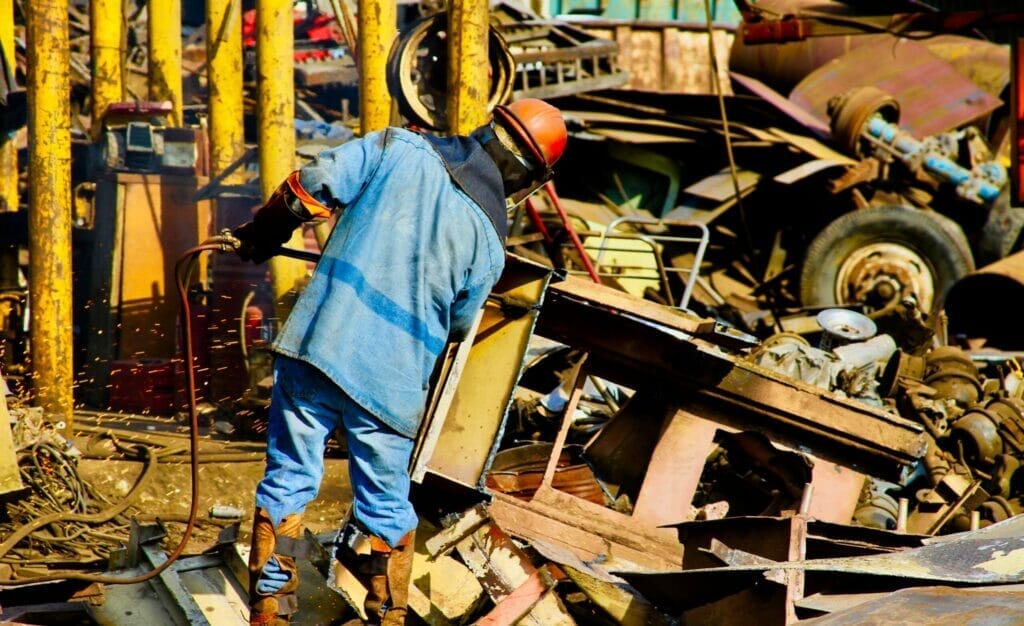
Lack of Proper Institutions, Systems, and Infrastructure
Another reason for the issue is the lack of appropriate institutions, systems, and infrastructure to manage and process end-of-life boats. In most countries, there is no well-thought-out approach from the government or other official institutions, and the last boat owner is usually completely on his own when trying to properly dispose of the end-of-life boat.
In addition, in most countries there is no central registry for boats, which makes the identification of ownership of an abandoned boat very difficult and the enforcement of proper disposal of end-of-life boats almost impossible.
The main reason for this absence of institutions, systems and infrastructure is that the volume of end-of-life boat waste is relatively small compared to other sources of waste streams and has therefore received little attention from both policy makers and the industry. Nevertheless, this relative insignificance is far from a reason to ignore the problem, because in the near future the volume will increase significantly and at the same time the potential extent of the damage is not yet scientifically certain.
Lack of Awareness
Related to the lack of proper institutions, systems, and infrastructure, is the overall deficit of awareness. According to a study conducted by Boat DIGEST (an EU project from 2013-2015 that addressed the problem of end-of-life boats), 37.1% of boaters surveyed in France, Italy, Spain, UK, and Turkey do not even know that there is a problem with end-of-life boats. This figure is alarming and such lack of awareness among boat users is an easily preventable factor that contributes significantly to the issue of end-of-life boats.
Conclusion: There Is a Lack of Incentives
As we can see, the combination of poor material recyclability together with high costs for transport and dismantling makes recycling of end-of-life boats financially anything but attractive. The costs usually significantly outweigh the direct financial benefits, so there is little incentive to properly dispose of an end-of-life boat.
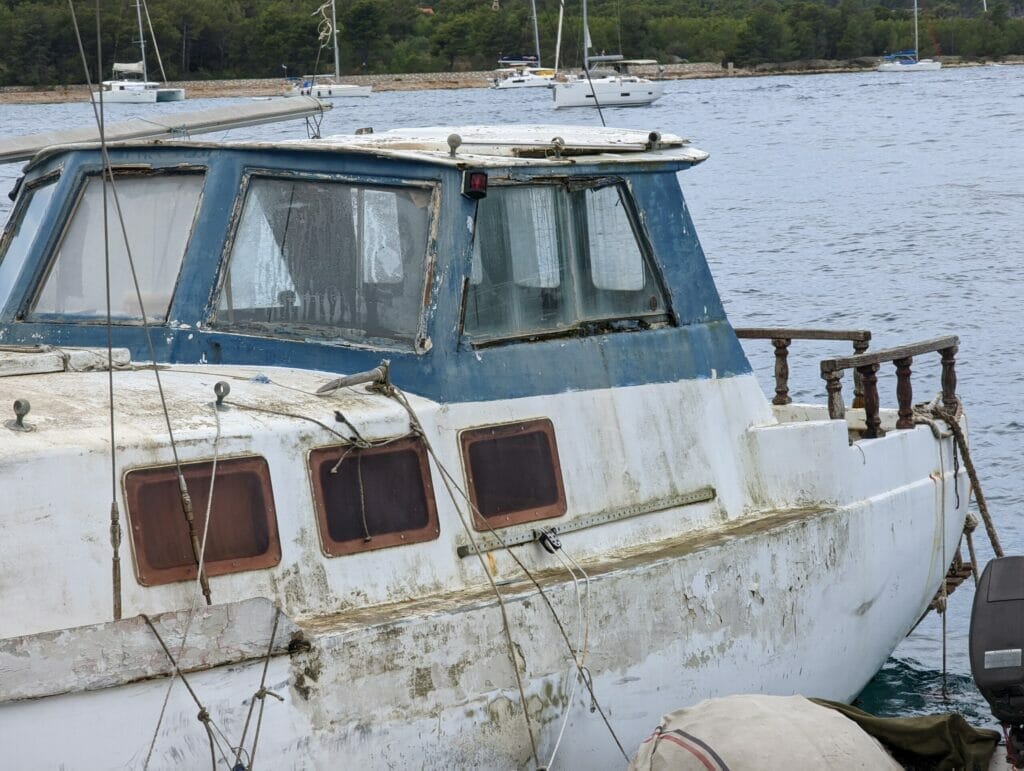
In fact, the cost-benefit issue primarily affects GRP boats, because metal boats such as steel or aluminum are much easier and, more importantly, more profitable to recycle. The value of the material used in a metal boat usually exceeds the cost of recycling, because there is a strong market for (recycled) metal, which offers attractive prices to incentivize recycling.
The issue of end-of-life boats is compounded by the lack of institutions, systems, and infrastructure, which further reduces incentives for proper disposal. Also, the lack of awareness among boaters, as well as among all other stakeholders, reduces motivation to properly dispose of end-of-life boats. Before we turn to possible solutions, we would like to briefly discuss these various stakeholders involved in the issue of end-of-life boats.
Involved Stakeholders
At the very beginning of the lifecycles of a boat are the manufacturers, who have a significant impact on the recyclability already when designing and constructing the boat and who can also raise awareness among their customers regarding end-of-life boats.
This brings us to the next key stakeholder, the boat owners, who are responsible for the proper disposal of their boats.
Also boat owners’ associations and nautical federations play an important role, because on the one hand they have the potential to sensitize (future) boaters and to create awareness. On the other hand, this stakeholder also plays an important role in the political discussion and has a significant influence on the legal framework.
Furthermore, marina operators and municipal authorities are directly affected by the problem of end-of-life boats, because when these boats are abandoned by their owners, this stakeholder group is responsible for their removal.
As described earlier, the problem also affects the tourism industry and therefore it is also part of the stakeholders involved, albeit more indirectly.
Additionally, NGOs and local communities are working against the improper disposal of end-of-life boats, mainly by raising awareness.
If a boat is totaled and it is covered by insurance, then the insurance company will take care of the disposal of the damaged boat and thus insurers are also an important stakeholder in the problem of end-of-life boats.
Finally, the companies that take care of salvage, transport, dismantling and recycling are also key stakeholders.
Now that we have a good overview of the problem, the causes of it, and the stakeholders involved, we can move on to the important question of how we might mitigate the issue.
How Can We Improve the Situation?
Raising Awareness
An effective way to address the issue of end-of-life boats is to raise awareness at all available levels. Whether it is at the time of boat purchase, driver’s license training, activities in boat owners’ organizations, marina visits, or purchasing boat insurance, efforts should be made to increase awareness among all stakeholders. We here at Maritime Affection are doing this as well by writing this text and in our post about sustainable boating we also encouraged you to start thinking about future disposal when choosing your boat.
Creating awareness is a prerequisite for any further action whether on a legislative, economic, or private level. Furthermore, creating awareness is very cost effective compared to the potential benefits.
Although the problem has been discussed in public for a long time and there are already many efforts to improve awareness, we see a lot of wasted potential here, as we could unfortunately observe that many efforts have come to nothing. For example, during our research we came across the EU-funded project Boat DIGEST (“The Boat Dismantling Insight by Generating Environmental and Safety Training”), which ran from 2013-2015 and addressed the problem of end-of-life boats. As part of this project, four multilingual sets of “Guidelines” were published online as well as a map with all disposal facilities and important points of contact. This might sound promising, but we were surprised to find out that the website is no longer online and that by clicking on the website address you will be redirected to some dating site. This makes us shake our heads, because a lot of work and certainly a lot of EU money was put into Boat DIGEST and then the output, which would be so important for creating awareness, is simply not utilized. Such a thing must not happen in the future and we from Maritime Affection are currently trying to get hold of the guidelines that have been developed. We will keep you posted.
Financing the Disposal
As described earlier, the high cost associated with the disposal of end-of-life boats is a major challenge and therefore the issue of funding needs to be addressed. Although the last boat owner has the responsibility to take care of the proper disposal of the boat, it is now widely agreed that the costs incurred for disposal should not be passed on to the last owner. The last owners of a boat often purchase the boats for a bargain price and do not have the financial resources to handle the disposal of their boat. That an old boat is bought for a symbolic price, lived on for a while and then abandoned as soon as a somewhat more expensive investment comes up, is unfortunately not uncommon.

As possible solutions for financing, there are suggestions to allocate a fund, for example through levies or additional insurance premiums, and from this pay for the disposal of end-of-life boats.
Another proposal that we currently feel is the best solution is to introduce some form of extended producer responsibility (EPR) for boats. An EPR is a fee to cover the costs of waste management associated with products and are paid directly by the manufacturer (who then usually passes the costs on to the customer in the form of price increases).
Especially for boats, it would make sense to integrate eco-modulation, i.e., to differentiate the EPR fee and calculate it according to different eco-criteria. For example, it would be conceivable to charge a lower EPR fee for aluminum boats than for GRP boats, due to the advantages of aluminum in recycling. This is an interesting idea, as it would make aluminum boats relatively cheaper than GRP boats. This would be particularly interesting for sailors, as many prefer aluminum to GRP, but are deterred by the additional cost of an aluminum boat. The degree to which a price shift would actually have an effect here would need to be studied in more detail, but it is definitely interesting to consider how the boat market would be changed by the introduction of EPR.
Another major benefit of the EPR is that it would directly incentivize producers to improve the sustainability of their boats, potentially gaining a competitive advantage by lowering EPR fees and consequently costs. This will of course require an initial investment in some cases, especially research and development, but in the medium and long term it can be expected that investments in more sustainable products will be financially rewarding. In addition, as consumer awareness increases, so does the demand for more sustainable boats, so it pays to invest in sustainability in this regard as well.
The recyclable composite boat “LBV35” by La Bella Verde and Innovation Yachts is a superb example of innovative, environmentally friendly boat building, because instead of conventional GRP it is constructed from volcanic fibers, harmless epoxy and balsa wood.
However, we also know that the EPR has certain disadvantages, such as indirect price increases that can disrupt the market economy, complex implementation and high effort required for regular audits of producers. Nevertheless, we, as well as other relevant organizations such as the European Boating Association, consider such an approach as the most effective one and also practical examples of EPR from various industries show the good effect of this policy instrument.
In addition, it would be conceivable to combine different concepts for financing. A good example is France, where the problem of end-of-life boats has been tackled since 2019 with a combination of EPR and an annual boat tax, so far apparently with good success.
Improving Recycling Technologies
Furthermore, the development of technologies that address the recycling of materials that are currently difficult to recycle, such as GRP, should be encouraged. Technological advances in this regard could simplify and economize the disposal of end-of-life boats that are difficult to recycle. Ideally, even critical composite materials such as GRP could then be recycled so efficiently that they would carry a financial incentive to be recycled, like metal. Currently, there are already many different organizations researching the efficient recycling of GRP, as this material offers great market potential, as GRP has applications in many other things as well, such as in rotor blades for wind turbines.
Financial resources for the promotion of technological progress could, for example, also be taken in part from the financing options listed above, such as an EPR.
Improving Owner Traceability
Even though we ourselves enjoy the largely remaining freedom of boating and resist additional regulations, we think that a mandatory registration is unavoidable in order to get the problem of end-of-life boats under control. After all, there is little to be said against such a registry, but it would enormously simplify the owner traceability of abandoned end-of-life boats. While such a registry would incur certain administrative costs, the savings that would otherwise be made in the time-consuming search for the owner would quickly outweigh these additional costs of the registry.
While some opponents of a boat registry argue that it would be possible with certain approaches, such as the EPR, to fund the disposal of end-of-life boats even without such a registry. This is generally correct, but even if the costs for the disposal of an abandoned boat are covered, it is often not legally possible for the local responsible parties, such as authorities or marina operators, to remove the boat in a timely manner without first locating the owner. Thus, the abandoned boat then blocks valuable space in the marina or, in the worst case, endangers the environment.

It is essential that a potentially harmful end-of-life boat can be dealt with quickly and this requires either a boat register or a fundamental change in legislation. And even a change in legislation would never cover all possible scenarios and a multitude of legal conflicts would be inevitable.
For this reason, we see a boat register as unavoidable, regardless of what measures are taken against the end-of-life boats and feel that such a register would not significantly affect any skipper in the freedom of boating.
We Can Do It!
Now that we have given you a good overview of the problem of improper disposal of end-of-life boats and its various causes and possible solutions in this post, we hope you will never think of abandoning your boat carelessly. We remain excited about the future and how we will work together to make the boating industry more and more sustainable through technological advancements and united efforts of all stakeholders. That said, we will overcome these challenges as well and continue to have fun on the water.
In closing, we have an interesting video to share on the issue, produced in collaboration with the Centre for Aquatic Environments at the University of Brighton.
Have you ever had to dispose of a boat? Or perhaps you’ve experienced the negative consequences of an improperly disposed end-of-life boat? Feel free to write it in the comments!

